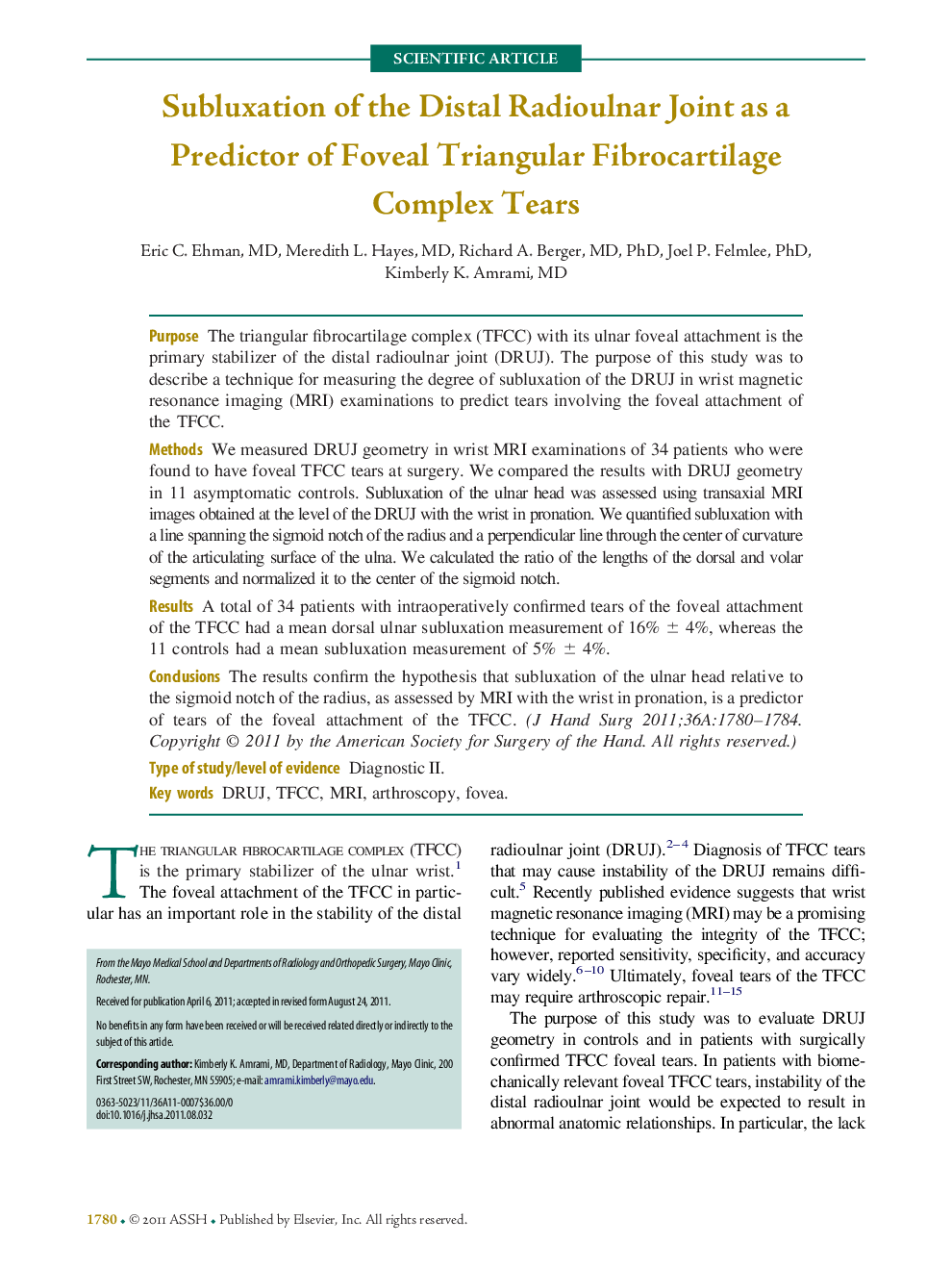| Article ID | Journal | Published Year | Pages | File Type |
|---|---|---|---|---|
| 4070111 | The Journal of Hand Surgery | 2011 | 5 Pages |
PurposeThe triangular fibrocartilage complex (TFCC) with its ulnar foveal attachment is the primary stabilizer of the distal radioulnar joint (DRUJ). The purpose of this study was to describe a technique for measuring the degree of subluxation of the DRUJ in wrist magnetic resonance imaging (MRI) examinations to predict tears involving the foveal attachment of the TFCC.MethodsWe measured DRUJ geometry in wrist MRI examinations of 34 patients who were found to have foveal TFCC tears at surgery. We compared the results with DRUJ geometry in 11 asymptomatic controls. Subluxation of the ulnar head was assessed using transaxial MRI images obtained at the level of the DRUJ with the wrist in pronation. We quantified subluxation with a line spanning the sigmoid notch of the radius and a perpendicular line through the center of curvature of the articulating surface of the ulna. We calculated the ratio of the lengths of the dorsal and volar segments and normalized it to the center of the sigmoid notch.ResultsA total of 34 patients with intraoperatively confirmed tears of the foveal attachment of the TFCC had a mean dorsal ulnar subluxation measurement of 16% ± 4%, whereas the 11 controls had a mean subluxation measurement of 5% ± 4%.ConclusionsThe results confirm the hypothesis that subluxation of the ulnar head relative to the sigmoid notch of the radius, as assessed by MRI with the wrist in pronation, is a predictor of tears of the foveal attachment of the TFCC.Type of study/level of evidenceDiagnostic II.
